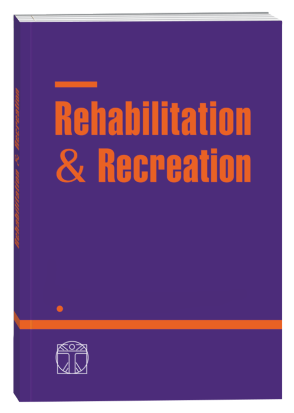ACTIVE GAMES IN PHYSICAL EDUCATION SYSTEM FOR SCHOOL-AGED CHILDREN
DOI:
https://doi.org/10.32782/2522-1795.2021.9.27Keywords:
active games, children, physical educationAbstract
The article examines the features of active games in the system of physical education of primary school children. The classification of modern active games is covered. Active play refers to such manifestations of game activity in which the role of movements is clearly expressed. Active games are characterized by creative, active motor actions motivated by the plot. They are aimed at overcoming various difficulties on the way to achieving the goals. It is due to this wonderful property that active games, especially with competitive elements, more than other forms of physical education, meet the needs of the body. It is established that with the help of active games it is possible to actively influence the process of development of physical qualities of the child, to control their development. Carrying out a comprehensive approach to the formation of physical qualities of primary school children, it is necessary to pay attention to the development of speed, agility, endurance and flexibility, those qualities that are most actively developing in primary school students. The study found that the widespread use of active games is one of the main means of increasing children's physical activity. It was found that the systematic use of games helps to expand the mobility of children, which become the necessary vital abilities and skills.
References
Аксьонова О.П., Кириленко Л.В. Школа компетентностей на уроках з фізичної культури в початкових класах. Науковий часопис НПУ імені М.П. Драгоманова. 2018. 3 К (97). С. 25–32.
Бондарчук Н.Я. Інтерес молодших школярів до занять фізичною культурою як психологічний критерій диференціації у процесі фізичного виховання. Спортивний вісник Придніпров’я. Дніпропетровськ, 2014. С. 17–22.
Борисова Ю.Ю. Диференційований підхід у фізичному вихованні школярів на основі використання комп’ютерних технологій. Дніпропетровськ, 2009. 20 с.
Вільчковський Е.С., Курок О.І. Народна рухлива гра – основний засіб фізичного виховання дошкільнят. Традиції фізичної культури в Україні : збірник наукових статей. ІЗМН, 2007. С. 147–153.
Непша О.В. Формування навичок здорового способу життя учнів молодших класів засобами фізичної культури. Актуальні проблеми молоді в сучасних соціально-економічних умовах. Житомир, 2018. С. 90–92.
Пангелова Н.Є., Харіна Д.Л. Аналіз наукових досліджень проблем фізичного виховання дітей раннього і дошкільного віку. Теорія і методика фізичного виховання і спорту. № 3. 2013. С. 76–81.
Сергієнко В.П. Особливості соціального розвитку дітей молодшого шкільного віку з різним рівнем рухової активності. Науково-педагогічні проблеми фізичної культури (фізична культура і спорт) : збірник наукових праць. Київ, 2018. С. 150–153.
Суханова Г.П. Особливості розвитку стрибучості у дітей шкільного віку. Перспективи, проблеми та наявні здобутки розвитку фізичної культури і спорту в Україні : матеріали ІІ Всеукраїнської електронної конференції (Вінниця, 30 січня 2019 р.). Вінниця, 2019. С. 114–119.
Томенко О.А. Рівень рухової активності школярів та шляхи його підвищення в умовах загальноосвітньої школи. Педагогіка, психологія та медико-біологічні проблеми фізичного виховання і спорту. Харків, 2008. 2. С. 141–146.
Христова Т.Є. Тестування рухових здібностей школярів : курс лекцій для студентів вищих навчальних закладів спец. «Фізична культура». Мелітополь, 2017. 48 с.
Downloads
Published
How to Cite
Issue
Section
License

This work is licensed under a Creative Commons Attribution-NonCommercial-NoDerivatives 4.0 International License.












